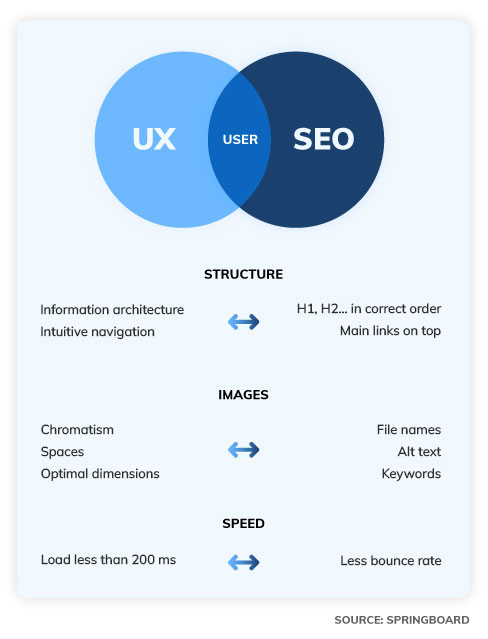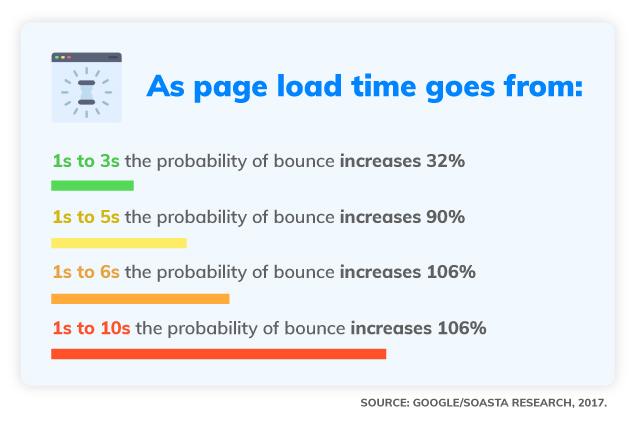[display-name-category]
[post_author]
[wtr-time]
Ahhhh, the good old SEO days. If you had a full page of relevant content, you ranked number one. It was all so simple. Nowadays, Google takes hundreds of different factors into account than before. Many people have reduced SEO to link building and keywords. However, as pay-per-click marketing experts, we’re eager to help you understand these factors and manage them without feeling overwhelmed.
As they say, most misunderstandings contain a grain of truth. This is where our lesson begins–at the facts. It is quite true that the most significant aspects of SEO are the two factors mentioned above. Again, these are link building and keywords. These strong practices that should never be left behind.
Yet, they are not the whole that is SEO optimization. At its core, SEO aims to improve ranking on search engines to attract more visitors.
For example, if you have a high value content page that will inform users about your product/service, metrics like Session Duration will help you understand how much time they are spending on that page. If that number is decreasing you should consider targeting your efforts to User Experience and revamp how the message is displayed.
Why is User Experience Critical for SEO?
User Experience is a design process focusing on end-user interaction.

SEO happens before the first click. It is the practice that attracts people to your website. UX follows, taking over once users are on a platform. It considers their behavior once they’re on your website.
Both of them must work for the website to be a success. The primary goal is to increase the conversion rate.
If you have a great SEO practice in place but lousy UX, users will arrive at your site to jump off. There is a decreased chance that the traffic will generate conversions. This is sending out many invites and having people leave the party because it’s an obvious flop. *Cringe*
Inversely, a website with great UX and lousy SEO won’t get as many website visitors as you’d like, no matter how good your website is. This scenario is having a great party but not sending out the invites. Think of all those appetizers and cake.
Which is worse? Both sound pointless.
The images of delicious untouched party cake should still be on your mind. This best describes how UX and SEO work together.

A Partnership for Improved SEO
Google maintains its quality by running down the elements of the user experience. Typical questions might include:
“How easy is it to navigate your site?”
“Do you have quality content that makes visitors want to stay and engage?”
“Is your site secure, fast, and mobile-friendly?”
The answers to these questions are a step in improving your SEO. So, let’s do that together. Below are five best practices from user experience design that will contribute to your site’s SEO performance. Let’s get started.
5 User Experience Practices That’ll Improve SEO
1. Simplify Website Navigation
SEO often encourages a grandiose website architecture, resulting in complex navigation. Instead of having one page with relevant keywords, it becomes pages and pages full of particular keywords.
A common conflict between UX design and SEO lies in page count. A recent study by Ahrefs supports the one-pager format with many related keywords.
If users navigate your site with ease from their devices, they’ll stay on longer. A content-rich and easy-to-roam site can work wonders for SEO.
However, a complex website architecture, although arguably more SEO-friendly, can cause users to leave sooner.
There is a sweet spot to be uncovered here.
You’ll learn more about this when you review Google Analytics’ Session Duration. Put search engines aside for a moment. Review how engaging your website experience is to your users. Often, a few tweaks to your navigation lead to successful Search Engine Optimization.
2. Reduce Page Loading Time
We’ve all heard that site speed is one of the most critical elements of SEO and UX. According to Google research, there is a three-second window before a user decides your website takes too long to load.

You’d be surprised to find out that some big-name websites have slow loading times. However, UX design tips can address loading time issues:
- Stay away from obscure fonts.
- Keep rollover buttons/hover effects imageless.
- Use accordions to segment the content.
- Avoid parallax scrolling, especially if you are trying to optimize the site for mobile use.
- Stick to high-quality images in the proper size before posting them.
3. Enhance Mobile Experience
Mobile responsiveness is vital for both UX and SEO goals. 54% of the global traffic comes from mobile. So if your website is not optimized for mobile users, you stand to lose more than half of your visitors.
Aren’t sure where you stand with this? Use Google Friendly-Mobile Tool to have more insights on how to optimize your site.
4. Use Fat Footers Correctly
We all know that footers are the area at the bottom of the page; their main goal is to add more information about the content and provide other links that might come in handy.
Fat Footer is just another word for footers with large content, but in some cases, websites overuse this component and create Obese Footers. The correct usage of fat footers on websites is a good indicator of great SEO and UX. It helps usability when users can rely on a well-structured footer if they can’t find what they’re looking for.
Fat footers strengthen structural SEO by helping link building to the site’s best pages for each key topic. All in all, fat footers are very common, but they should not be overused because it’s bad for users when you add a group of links so extensive that it is not possible to scan.
5. SEO Friendly Layouts
As strategists, we are often presented with beautifully designed websites that are actually disruptive for SEO. Perfectly sized paragraphs and headers with just the right amount of content can create a sense of balance, yet these aesthetics can get in the way of good SEO. But what would be the right amount of content? Between 700 and 1000 words per page, it’s what’s recommended by experts; yet another thing you need to consider is the readability of said content.
Instead of doing lengthy paragraphs, consider 3 to 4 sentences per paragraph.
Separately, sometimes people focus on having less content and more images without taking into consideration the actual content needed to get your point across.
A simple layout can showcase your content. A structure can create harmony between UX and SEO to generate organic traffic and keep users on the site.
When you design your website, consider these principles:
- Serve content that is easy to digest. While copy and word count are essential for SEO, don’t overload pages. Text-heavy pages can feel like a technical manual.
- Distinguish background and foreground with your brand’s color palette. Leverage contrast between the text and the backdrop to support readability. Here is a helpful tool: color contrast checker.
- Establish a typographic system. Standardize the spacing and arrangement of text as the reader descends the page. This system considers three factors: font size, line height, and margin or padding. Check out this typographic grid tool to determine your content rhythm.
Don’t be shy when using CTAs – always keep in mind conversion rate optimization (CRO). Call-to-actions are a must to keep users on your website. Create a journey and make it satisfactory to your users; it can be as simple as an in-copy link or a bottom to “Read More.”
Conclusion
This should just reiterate the point we are making in the first section.
Can we drive to one of the services or another post that might follow up on an issue?
In conclusion, user experience design should be a primary consideration of any SEO campaign. UX design has a direct and powerful impact on your SEO rankings through the various metrics that search engines use to track user engagement.
Such a holistic, user-centric approach to your online presence will help you keep users satisfied, nourish strong relationships and, consequently, tell Google that you’re a valuable online resource.






